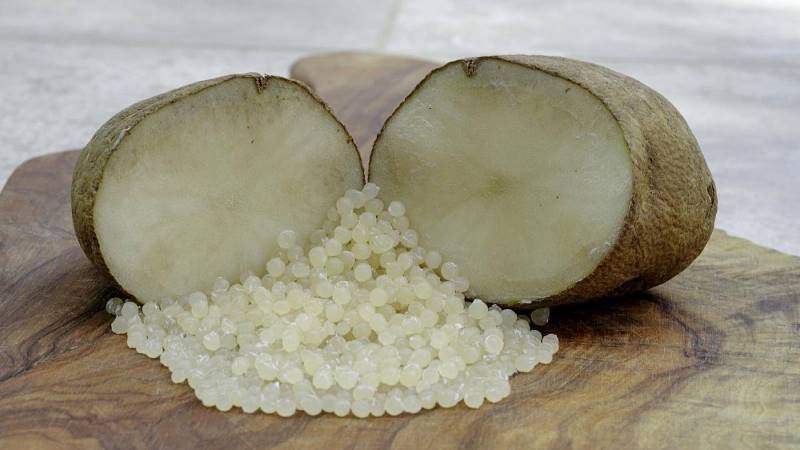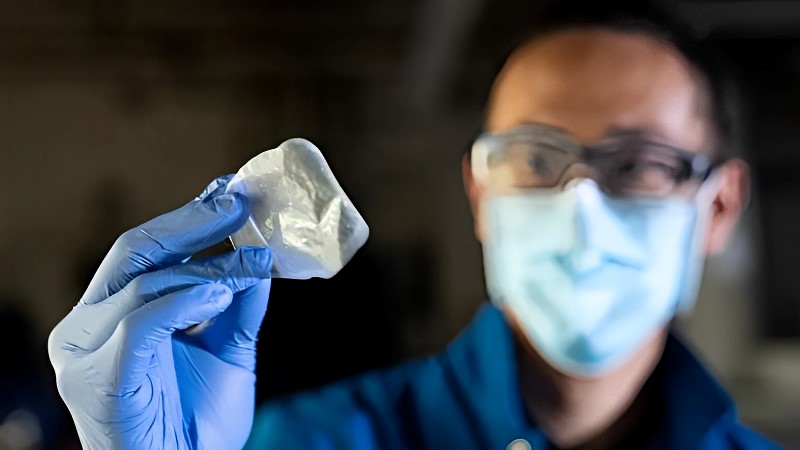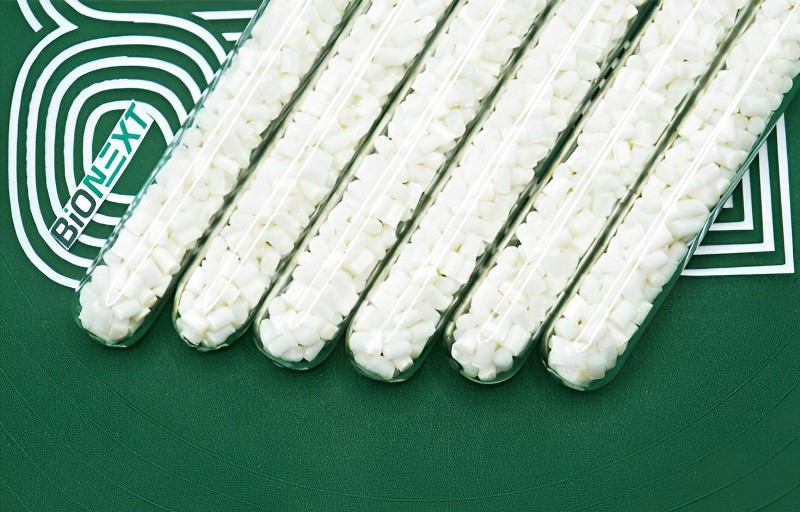As concerns about climate change and plastic pollution grow, the world is turning to more sustainable alternatives. Among them, bioplastics are emerging as a promising solution. But what exactly are bioplastics, and how are they made?
From cornfields to lab beakers, the process of making bioplastics blends biology, chemistry, and engineering. In this article, we’ll explore what bioplastics are, where they come from, and how they’re manufactured step-by-step. Whether you’re an environmentally curious reader or just want to understand the next generation of plastics, this guide covers everything you need to know.

But what exactly are bioplastics, and how are they made?
1. What are bioplastics?
Bioplastics are plastics made from renewable resources, such as cornstarch or sugarcane. Not all bioplastics are entirely biodegradable. There are three main types: bio-based bioplastics, biodegradable plastics, and biodegradable bio-based plastics. Some bioplastics meet both criteria. For example, PLA (polylactic acid) is both bio-based and biodegradable, while Bio-PE (bio-based polyethylene) is renewable but not biodegradable.
Since they are made of biomass sources, they are easier to decompose and recycle. Bioplastics do less harm to the environment, making them a sustainable alternative to traditional plastics.
To thoroughly understand the definition of bioplastics, you can read more here: What are bioplastic compounds?

2. How are bioplastics made?
2.1. What are the raw materials for bioplastics?
Before knowing how to make a bioplastic, you must understand what bioplastic is made of. Chemical engineers have created biobased polymers from a variety of biomass sources. The biomass source chosen is critical for achieving desirable material qualities in the final plastic and ensuring environmental and financial feasibility in scaled-up, market-ready goods.
Read more: What are bioplastics made from? Materials to make bioplastics
The raw materials used to create bioplastics vary depending on the type of bioplastic being produced. Some of the most commonly used raw materials for bioplastics include:
Corn starch
Corn starch is a prominent raw ingredient to produce bio-based bioplastics. Corn starch is extracted from the endosperm of corn kernels and then mixed with glycerol to create a range of bioplastics.
| Advantages |
Disadvantages |
- Corn starch accounts for more than 85% of global starch, which means this ingredient has a low price and high availability
- The production of starch-based bioplastics is simple
- The final products have high performance and biodegradability
|
- Corn plastic will only break down in a commercial composting facility with a hot and humid environment.
|
Potato starch
Another such plant-based material is potato starch. Potato starch is the main ingredient to create a variety of bioplastics, including polylactic acid (PLA). PLA is a biodegradable bioplastic often used in food packaging.
The starch is extracted from the potato and mixed with other natural ingredients such as glycerol and water. The mixture is then heated and molded into the desired shape.
| Advantages |
Disadvantages |
- Potatoes are a widely available and sustainable crop
- Bioplastics made from potato starch are biodegradable, and can break down naturally over time
|
- The production process can be expensive and energy-intensive
- The resulting bioplastics may not have the same durability or strength as traditional plastics
|
Starch-based thermoplastics made up roughly half of the bioplastics market. In recent years, there has been a lot of interest in innovative starch-based nanocomposites. In testing, these nanomaterials have demonstrated remarkable mechanical, thermal, hydrophobic, and gas-blocking properties.

Starch-based thermoplastics made up roughly half of the bioplastics market.
Sugarcane
Sugarcane is another popular raw material for bio-based bioplastics. Sugarcane is first harvested and processed to extract the sugar, which is then fermented to produce a type of alcohol called ethanol. This ethanol can then be used as a feedstock for the production of bioplastics. Sugarcane plastic is suitable for a variety of plastic goods ranging from culinary utensils to medical gadgets.
| Advantages |
Disadvantages |
- Sugarcane bioplastics can be recycled
- Sugarcane also absorbs carbon dioxide
- Sugarcane waste, known as bagasse, is used to generate electricity for the production of bioplastics.
|
- Sugarcane bioplastics are not entirely biodegradable and compostable.
|
Cellulose
Another common biomass source for biobased polymers is cellulose. Cellulose is an organic substance extracted from plant cell walls.
After extraction, it will be mixed with other ingredients, such as plasticizers, colorants, and other additives to create bioplastic. The final products can be used in a variety of applications, such as packaging, disposable cutlery, and even clothing as an alternative to traditional plastics.
| Advantages |
Disadvantages |
|
|
- Cellulose-bioplastic production may increase the potential for eutrophication and land use compared to petrochemical plastics
- The extraction of cellulose can be complicated and costly
|
Algae
Algae and cyanobacteria are widespread in the bioplastic industry thanks to their low nutritional requirements, ability to be harvested year-round, and capacity to survive in non-arable settings such as wastewaters.
Bioplastics derived from algae are still in the early phases of development, but they have the potential to be a more sustainable alternative to standard plastics. They are also utilized in many applications, including electronic display applications, food packaging, whether for fresh or long-term storage, Greenhouse films, protection nets, or grow sacks.
| Advantages |
Disadvantages |
| -Improve plastic biodegradability |
-Not all algae strains can adapt to a variety of environments
|

Bioplastics derived from algae have the potential to be a more sustainable alternative to standard plastics.
Other resources
Polysaccharides such as chitosan can also be used to make bioplastics. Chitosan may be dissolved in mildly acidic settings, making it suitable for solution casting to produce films.
Engineers from Yale, the University of Wisconsin, and the University of Maryland recently developed a "lignocellulosic" bio-based polymer formed of wood powder. Wood powder is an inexpensive and widely available residue of wood products that serve as the foundation for the new substance.
2.2. The bioplastic production process
How to make bioplastic? There are multiple types of bioplastics being manufactured now using various manufacturing procedures. Factories can use existing plastic manufacturing infrastructure to produce bioplastics chemically similar to their petroleum-based equivalents. Bio PE, bio-PET, or bio-PP can be made with the same process as regular PE, PET, and PP.
On the other hand, certain bioplastics created from the ground up are produced utilizing bio-based manufacturing procedures. The process can be microbial reactions and nanotechnology synthesis processes such as epitaxial growth.
The last way to make a bioplastic is to extract polymer from the microorganism. This procedure begins with centrifugation to isolate the microorganisms, followed by press filtering and drying the resulting bioplastic.
Bacteria employed in this method are occasionally genetically altered to metabolize diverse feedstocks and to boost feedstock conversion efficiency into polymers. Polyhydroxyalkanoates (PHA) are the most extensively researched bioplastics derived from this technique.

How to make bioplastic?
2.3. How much does it cost to make bioplastic?
Plastic manufacturing using biological resources is a viable solution for decarbonizing plastic production and addressing the plastic waste problem. Yet, according to European Bioplastics (2020) estimates, approximately 1% of the world's more than 368 million tonnes of plastic are bio-based or biodegradable.
Alternative production methods based on agricultural byproducts or waste materials have been available for quite some time. Nonetheless, this production processes' cost is still perceived as an obstacle.
According to research published in Cleaner Engineering and Technology journal in 2022, polylactic acid (PLA) bioplastic production costs vary from $844/ton to $2.410/ton. The wide range of production cost is due to the different chosen feedstocks, technology, energy, labor, and capital costs.

How much does it cost to make bioplastic?
3. How to make bioplastic stronger?
There are several ways to make bioplastics stronger:
- Reinforce with natural fibers: Adding natural fibers, such as flax, hemp, or bamboo, can significantly increase the strength of bioplastics. During the production process, manufacturers can add these fibers to create a composite material that is stronger and more durable.
- Increase the polymer concentration: Bioplastics are made from a combination of natural polymers and other additives. Increasing the concentration of natural polymers, such as cellulose or starch, can improve the strength and rigidity of the final product.
- Add plasticizers: Plasticizers are substances added to plastics to improve their flexibility and durability. Adding plasticizers to bioplastics can make them more resistant to breaking or cracking.
- Modify the production process: The process can also be modified to improve the strength of bioplastics. For example, changing the temperature, pressure, or duration of the production process can affect the properties of the final product.
On the other hand, how to make bioplastic waterproof? Manufacturers can add waterproofing agents or waterproof coating to improve the water-resistance properties of biopolymers.
Although bioplastics still have disadvantages, there is room for improvement. By combining these approaches, researchers and engineers can create bioplastics that are not only strong but also sustainable and biodegradable. With continued efforts and innovation, we can make bioplastics a viable alternative to traditional plastics and pave the way for a more environmentally conscious future.

How to make bioplastic stronger?
4. Common products made from bioplastics
As the world becomes more environmentally conscious, the demand for eco-friendly products has increased, and bioplastics have emerged as a promising solution. Here are some common products made from bioplastics:
- Food packaging: bags, containers, and films.
- Disposable cutlery and tableware: disposable utensils, cups, and plates
- Plant pots
- Shopping bags
- Clothing
- 3D printing filament
- Toys
These are just a few examples of products that can be made from bioplastics. As technology continues to improve, more and more products are likely to be made using bioplastics in the future.

Common products made from bioplastics
5. BiONext - an innovative biodegradable bioplastic from EuroPlas
BiONext is a bioplastic product developed by EuroPlas, a leading company in the field of plastic materials. BiONext is an eco-friendly alternative to traditional plastic products, as it is derived from sustainable biomass sources such as PLA, PHA, plants, and vegetables (corn, palm oil, potatoes), or fossil fuels (PBAT)
Unlike traditional plastics derived from non-renewable fossil fuels can take hundreds of years to decompose, BiONext can biodegrade within 12 months.
BiONext is versatile and used in various products, including food packaging, bags, utensils, and even automotive components. It is also heat-resistant and can be molded into different shapes and sizes, making it a popular choice for manufacturers and consumers.
EuroPlas bioplastics offer similar properties to traditional plastics but with the added benefit of being eco-friendly and reducing the carbon footprint. Our products are sustainable and responsible alternatives to conventional plastics, helping to reduce the environmental impact of plastic waste and supporting a more circular economy.
Contact EuroPlas to learn more about BiONext.

BiONext - an innovative biodegradable bioplastic from EuroPlas
Bioplastics are a promising alternative to traditional plastics, as they are made from renewable sources and are biodegradable or compostable. And this article has answered the question, “How are bioplastics made?” They are manufactured through various processes and the blending of natural materials such as corn starch, sugarcane, and vegetable oils.
With advancements in technology and increased awareness about the harmful effects of traditional plastics on the environment, bioplastics are expected to become more prevalent shortly. As consumers and industries prioritize sustainability, the demand for bioplastics will only grow, creating a more eco-friendly and sustainable future for all.